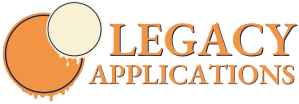Short answer: sometimes yes, sometimes no. In Florida, primer choice depends on the wall’s condition, the current finish, and our climate. Using primer when it is actually needed improves adhesion, blocks stains, evens out color, and prevents flashing in Florida’s strong light. Skipping primer when it is not needed saves time without sacrificing quality.
Use this guide to decide when to prime, what to use, and how to get a flawless result in Pinellas County homes.
When You Definitely Need Primer
- New drywall or repaired areas – Drywall mud is porous and will flash without primer. Use a dedicated drywall primer or a high-quality multi-surface primer.
- Glossy or previously oil-based paint – Kitchens, baths, and older trim can have slick finishes. Scuff sand, clean, then apply a bonding primer so the new coat grips.
- Stains or odors – Water marks, nicotine, markers, and stubborn mildew stains can telegraph through paint. Use a stain-blocking primer after cleaning and treating the area.
- Major color change – Going from dark to light or bold to soft often requires a tinted primer to prevent multiple extra finish coats.
- Moisture-prone rooms – Bathrooms and laundry rooms benefit from a mildew-resistant bonding primer before your topcoat.
When Primer Is Usually Optional
- Previously painted flat or eggshell walls in good condition – Clean, lightly scuff if needed, and apply two uniform finish coats of quality paint.
- Minor color shift within the same family – If coverage is good after the first coat, a second coat finishes the job.
Quick rule: If adhesion, stains, porosity, or color coverage are concerns, prime. If walls are clean, dull, and sound, you can often skip it.
Best Primer Types for Florida Homes
- Bonding primer – For glossy enamel, cabinets, and hard-to-paint surfaces. Improves adhesion in humid conditions.
- Stain-blocking primer– For water stains, nicotine, markers, and tannin bleed. Choose waterborne for low odor or shellac for severe stains.
- Drywall primer – Seals fresh mud and creates uniform porosity so finish coats look even.
- Mildew-resistant primer – Ideal for baths and laundry rooms where humidity lingers.
Florida-Specific Prep Steps
1) Clean first
Wash walls with a mild cleaner. Rinse and let dry fully. Residue and aerosols (like silicone polish) cause adhesion failure.
2) Control humidity
Set AC or a dehumidifier to keep indoor humidity near 50 percent while priming and painting.
3) Scuff glossy areas
A light sanding creates tooth for the primer to grab.
4) Spot prime repairs
Prime patches and stains before full rolling so sheen and color stay consistent.
Quick Selector: Do I Need Primer?
| Situation | Prime? | Recommended Primer |
|---|---|---|
| New drywall or large repairs | Yes | Drywall or multi-surface primer |
| Gloss or old oil enamel present | Yes | Bonding primer |
| Water marks, smoke, crayons | Yes | Stain-blocking primer |
| Dark to light color change | Often | Tinted primer for coverage |
| Clean flat walls, same color family | Usually no | Go straight to two finish coats |
| Bathroom or laundry with frequent steam | Often | Mildew-resistant bonding primer |
Coverage and Coat Planning
- Spot prime patches first, then roll a thin, even coat over the full wall if needed.
- Finish with two uniform topcoats.
- Maintain a wet edge and consistent roller nap so texture matches.
Common Mistakes to Avoid
- Painting over damp walls after shower use or cleaning
- Skipping primer on slick or stained surfaces
- Using one heavy coat instead of controlled thin coats
- Forgetting to tint primer for big color shifts
- Ignoring ventilation, which slows cure and can dull the finish
Ready for a Florida-proof interior repaint
At Legacy Applications, our craftsmen evaluate each room, specify the correct primer only when it adds value, and pace dry times around Florida’s humidity. The result is a smooth, even finish that looks designer-level and lasts.
Book your free consultation today, and receive a precise room-by-room plan for prep, primer, and paint selection.
